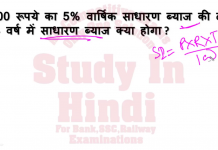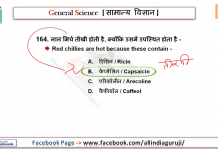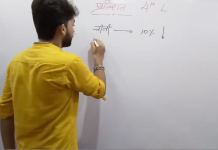Motion in One – Dimension (Class XI) for CBSE, JEE and NEET
Galileo’s Law of Odd numbers
The distances traversed, during equal intervals of time, by a body falling from rest, stand to one another in the same ratio as the odd numbers beginning with unity [namely, 1: 3: 5: 7 …]
Useful Equations of Motion (for constant acceleration)
s(nth) = u + (a/2)(2n-1)
v(avg) = (v+u)/2
v = u + at
s = ut + (1/2)at^2
v^2 – u^2 = 2as
Learn how to apply differentiation and integration in Physics
v = dx/dt
a = dv/dt
a = v dv/dx
Slope of v-t graph gives acceleration
Area under v-t graph gives displacement
Share this Video – Spread Learning
Link to share: https://youtu.be/DOXzPUtaCqg
Visit our facebook page
https://www.facebook.com/coachenggg
Visit our website
https://www.coachengg.com
Visit our youtube channel www.youtube.com/coachengg4u
coachengg4u
Motion in Straight line CBSE Class XI Physics, Physics Straight line motion Part 1, Instantaneous speed and velocity | One-dimensional motion | Physics, Kinematics – IIT JEE Main & Advanced Physics Video Lectures, Motion in a Straight Line: Crash Course Physics #1, Motion in a Plane CBSE physics class XI 11, Class 11-Physics Online Video Lectures-Motion: Distance and Displacement, Average velocity for constant acceleration | One-dimensional motion | Physics |, Class 11-Physics-Motion in a Straight Line-Medical-NEET, Class11/- Physics-Motion in a Straight line -Introduction -01, Physics(Lec1,Motion In A Straight Line(Part-1)(Kinematics),Class 11,CBSE,XI, Physics Straight line motion Part 1 Rectilinear motion class 11 CBSE, AP Calculus: Rectilinear Motions with Derivatives, Newton’s 3 (three) Laws of Motion, Introduction to motion, First Equation of Motion, Equations of motion – derivation and use, Kinematics First Equation of motion v=u+at, EQUATION OF MOTION USING GRAPHICAL METHOD, How to Calculate Velocity Average velocity for constant acceleration | One-dimensional motion |, Calculating average velocity or speed | One-dimensional motion | Physics | Speed vs. Velocity, Position, Velocity and Acceleration, Basic Physics: What Is Acceleration?, Acceleration | One-dimensional motion | Physics |, Position time graph, velocity time graph, acceleration time graph for uniform motion, V T Graph Or Velocity Time Graph, Linear Motion – Uniform (Constant) Acceleration and Velocity – Time Graph, Walking Position, Velocity and Acceleration as a Function of Time Graphs, Velocity vs. Time Graph: Part 1, P-T GRAPH PRACTICE – Position vs Time Graph, Describing Motion 1D Motion, Velocity Time Graphs Part 1 Kinematics Physics Lesson Tutorial, XI Velocity Time graphs, Introduction.mp4, Distance-Time and Velocity-Time Graphs | GCSE Physics | Doodle Science, Distance-time graphs & speed – GCSE Science Shorts Sketch, Distance Time Graph, Speed, Velocity and Distance Time Graphs – Physics – Science – Get That, Distance (position) to Velocity Time Graph Physics Help, Displacement Velocity Acceleration Time Graphs – Slope & Area – Physics – Distance, Speed, Position, Deriving Kinematics Equations Using Calculus, Equations of motion derivation by calculus, How to Derive Equations of Motion – With and Without Calculus, Physics Motion part 12 (Equation of motion) CBSE class 9 IX, Differential Equations of Motion | Highlights of Calculus, Proving equations of motion (kinematics equations), Displacement in nth second from start of Motion, Physics Problem – Distance traveled under gravity in n th second, Displacement in nth Second, Motion in a Straight Line: Crash Course Physics #, Physics Motion part 2 (Path, Length & Displacement) CBSE class 9 IX, Intro to vectors & scalars | One-dimensional motion | Physics |, Misconceptions About Falling Objects, Galileo’s Leaning Tower of Pisa experiment explained, The Odd Rule, Galileo’s law of free falling object, Physics Laws of motion part 2 (Inertia, Galileo law) CBSE class 11, Physics Force & Laws of Motion part 2 (Aristotle & Galileo’s law) CBSE class 9 IX, More on Newton’s first law of motion | Physics |, Galileo’s falling objects theory, A ball is thrown upward from the ground with an initial speed of 25 m/s; Quadratic function (ball thrown upward), Vertical motion under gravity – ball thrown upwards from a balcony : Physics – Mechanics: Motion In One-Dimension (18 of 22) Free Fall: Ex. 5: Finding Max Height, Throwing a Ball up to 2.0 Meters & Proving the Velocity at the Top is Zero, Maximum Height of a Ball Quadratic Word Problem,
source













![CY_GATE_2019_PHYSICAL_SPECTROSCOPY_[ELECTRONIC_BASIC]_All IN ONE_[Short_Trick]_2018-19_PART_1ST - Videos](https://trends.edugorilla.com/wp-content/uploads/sites/8/2018/08/cy_gate_2019_physical_spectroscopy_electronic_basic_all-in-one_short_trick_2018-19_part_1st-218x150.jpg)


















![24 August 2018 – The Indian Express Newspaper Analysis हिंदी में – [UPSC/SSC/IBPS] Current affairs - Videos](https://trends.edugorilla.com/wp-content/uploads/sites/8/2018/08/a520-218x150.png)




Owsm video ☺?
Very well explained.Thank you